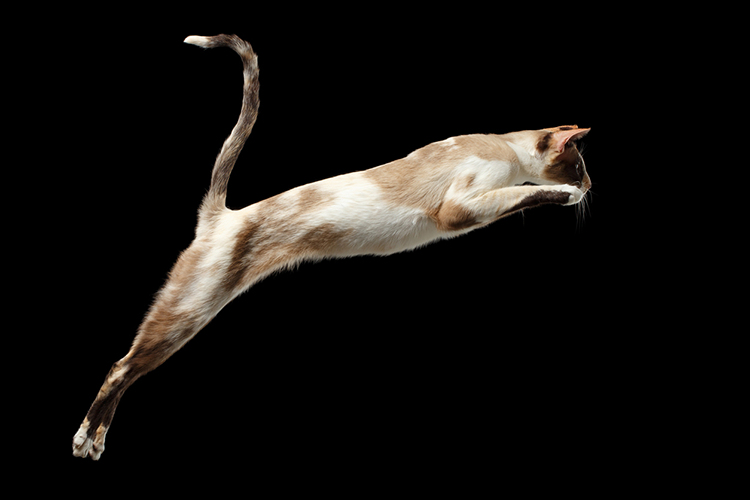On a cold March morning in Boston’s West End, a woman was sitting in her second-floor apartment when she saw a light-colored streak zoom down past her window. She ran to the ledge, looked below, and saw a white cat walking off a patch of mulch like it was no big deal.
Looking around, witnesses on the ground saw an open sixth-floor window. Surely that’s where the cat must have come from, they thought. But when they called the Animal Rescue League of Boston, and staff there located the owner by scanning the lucky kitty’s microchip, they realized the cat’s survival was even more miraculous than they’d thought.
“When [the owner] told us she lived on the 19th floor, we were pretty blown away,” Brian O’Connor of the Rescue League told the Boston Globe.
For those keeping count, that’s a plunge of more than 210 feet, a fall that no animal should be able to survive. But the cat named Sugar walked away with only a few bruises on that morning in 2012.
This is how they do it
How can a cat survive that fall?
Ever since an ancient proverb declared that cats have nine lives, humans have been fascinated by feline grace, agility and an uncanny knack for landing safely on all fours. Their remarkable abilities remained shrouded in mystery from the days when they were revered as divine avatars in ancient Egypt until modern times, but now science has finally provided answers.
Thanks to slow-motion digital video, and high-speed cameras that can take 60 snapshots of a cat’s movement per second, scientists have been able to directly observe how cats have the remarkable ability to land on their feet.
 There are two main elements at play: The first is cats’ “righting reflex,” an evolutionary trait that allows cats to instantly determine which way is up as they fall. A falling cat will begin to twist her body immediately, starting with her head, then her spine, front legs, and finally her hind legs.
There are two main elements at play: The first is cats’ “righting reflex,” an evolutionary trait that allows cats to instantly determine which way is up as they fall. A falling cat will begin to twist her body immediately, starting with her head, then her spine, front legs, and finally her hind legs.
“It is an amazing operation and they do it quite automatically,” the late Cambridge University professor Sir Patrick Bateson told the UK’s Telegraph.
Initially, scientists assumed cats used their tails as rudders in free fall, but that theory went out the window after they realized even tail-less felines have full control over their bodies in the air.
Cats were skydiving before it was cool
The second piece of the puzzle is a cat’s physical profile. After a cat has successfully righted herself in mid-air — a process that takes mere milliseconds — she will instinctively spread her limbs as if she’s frozen in a horizontal jumping jack. The motion also stretches out the cat’s skin and fur, acting like a parachute.
Cats are blessed with a relatively large body surface area in proportion to their weight, meaning gravity is tempered by wind resistance as they fall. As a result their speed of descent slows down considerably, just like a skydiver pulling a ripcord.
See it in action
For those who want to see a cat’s righting reflex in all its slow-motion glory, Alabama-based engineer Destin Sandlin has you covered. With the help of a gorgeous stunt cat named Gigi, Sandlin shot footage with a specialized camera showing the blue-eyed tabby righting her body over a six-foot drop onto a padded mat.
Gigi uses her front paws to wind into the spin and whips her spine and rear legs around. It all happens faster than the human eye can visually parse, but with time slowed it becomes possible to appreciate how efficient and elegant the motion is. Would cats accept anything less?
How did cats get their superpower?
If you’re wondering how evolution blessed felis catus with such incredible abilities, you’re not alone. To answer that question, scientists turned to cats’ arboreal evolutionary history.
“Being able to survive falls is a critical thing for animals that live in trees, and cats are one of them,” Jake Socha, a professor of biomechanics, told the BBC. “The domestic cat still contains whatever suite of adaptations they have that have enabled cats to be good up in trees.”






